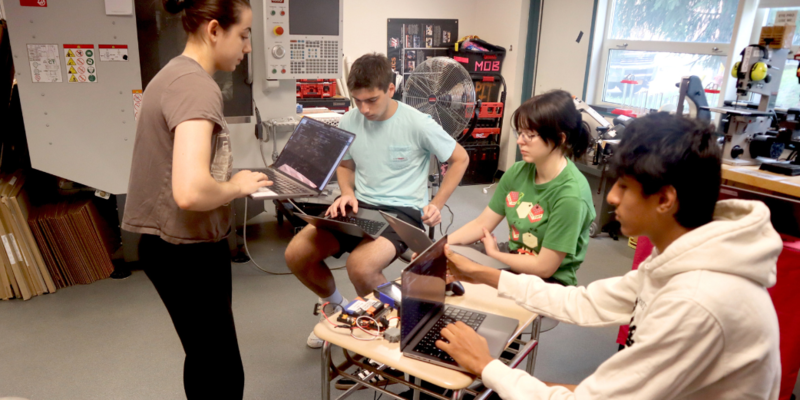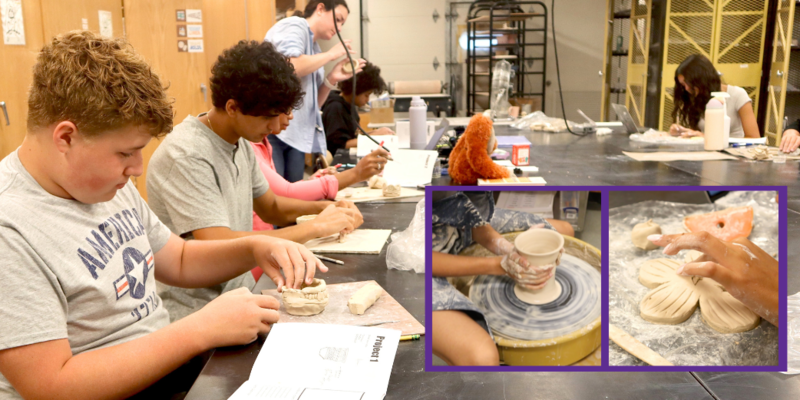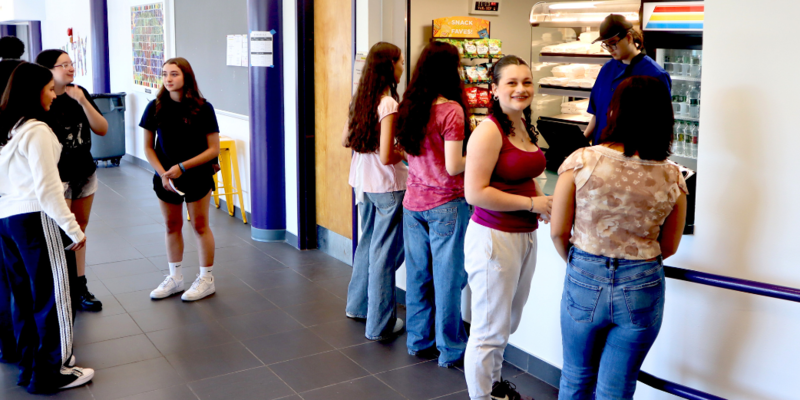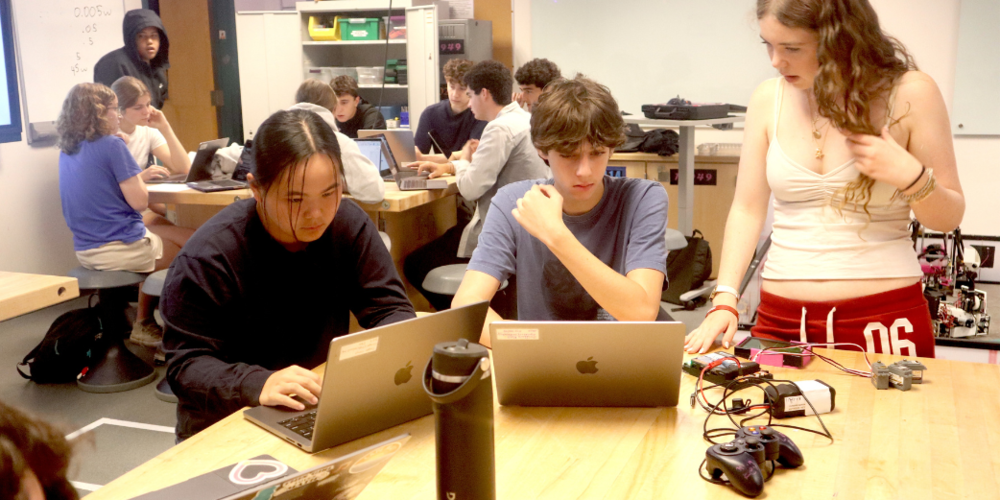The morning bell rings as Jonathan Peter’s robotics students walk into class, chatting while they set up their laptops, tools, prototypes and experiments. It takes several minutes before they can proceed into the more meaningful creative work of building robots. Last year, it sometimes felt like they just got going, when it was time to clean up.
This year, there’s a new framework in place to tip the balance towards productivity: block scheduling. Rather than taking eight different classes daily, students can have as little as four classes per day, each for a solid 82 minutes.

The decision was based on years of research by a committee that involved administrators, teachers, students and parents, as well as in-depth feedback from many schools in the area that follow a block schedule. While students will continue to take eight courses, which meet every other day, some classes, such as gym and resource room, will be shorter, 40-minute blocks.
“Block scheduling makes so much sense for us,” said Peter. “There's a much larger fraction of time in a block schedule to explore ideas thoroughly.”
The double-long periods are also designed to nurture engagement and reduce stress.
“Students have already shared that they are enjoying the pace of having fewer classes each day,” said AP biology teacher Anna Trieller.
Teachers like it, too.
“It makes learning feel more relaxed, engaging, and meaningful,” said social studies teacher Chris Shamkin. “Students don’t have to juggle as many classes or assignments in one day and, as a teacher, I can mix up activities and try out different strategies in the same class period.”

The focus in Kristen Lowe’s pottery studio is evident more than 45 minutes into class. It’s the second block of the day, and students are working on the wheel and building with clay, with no pressure to put away and shift gears. “Block scheduling is better for all art classes,” said Lowe. “It gives students time to connect with their creativity.”

When the bell rings, it’s time for lunch – for everyone in the building. A common lunch, in which everyone in the building eats lunch at the same time, is built into the new schedule.
"I’m encouraged by what I’m seeing and what teachers and some students have shared with me," said Principal Steven Siciliano. "We know it’s a process but it’s always good to start strong and I think we have. In the long run, we’re confident this will serve our students better."

